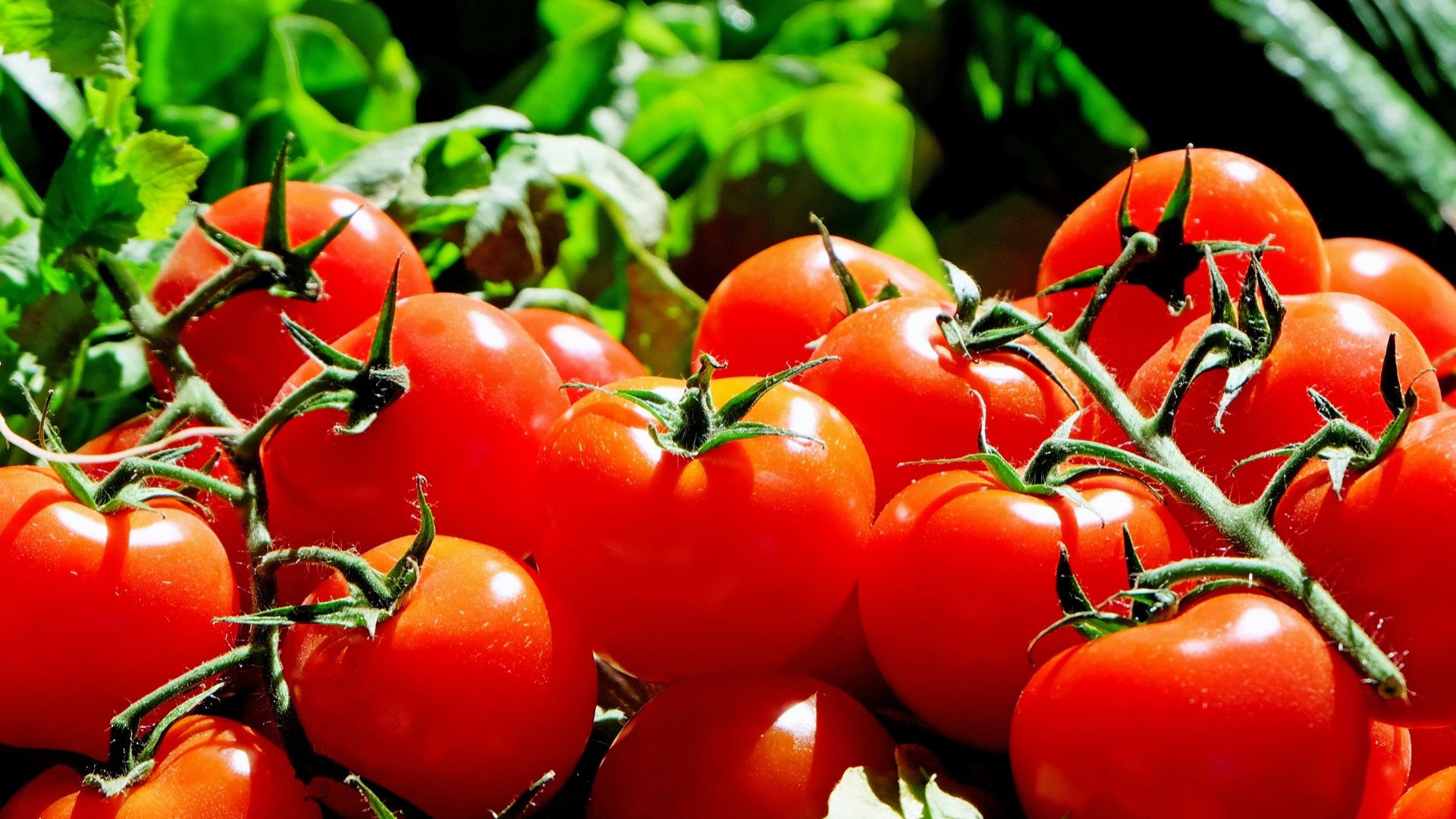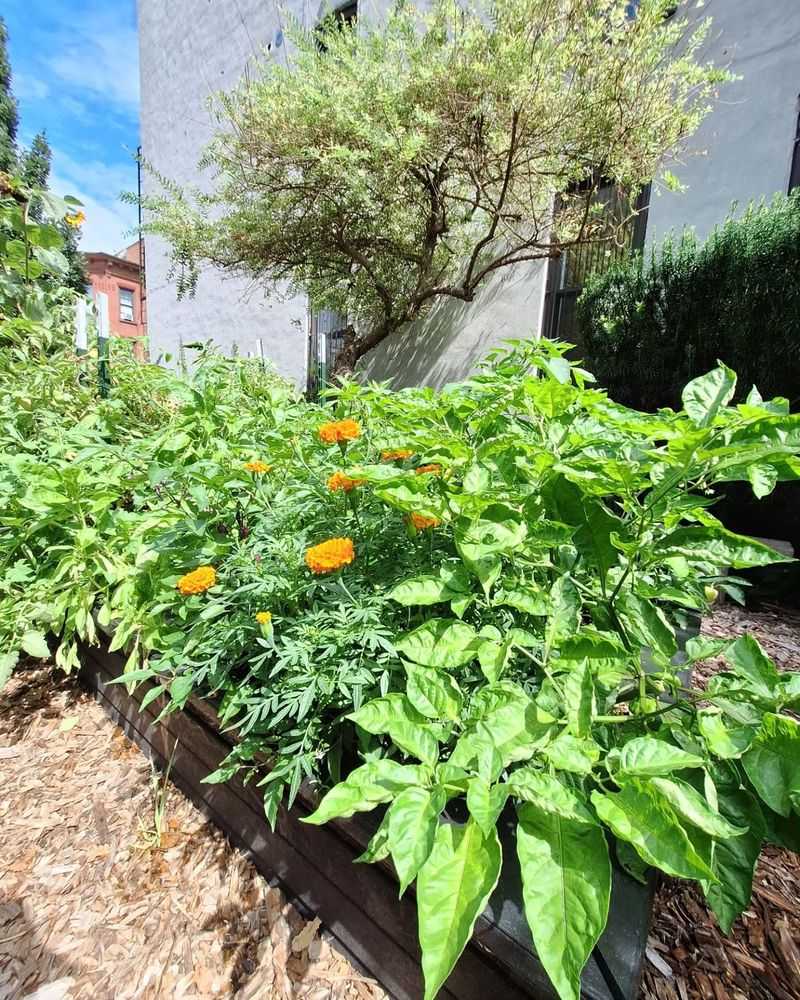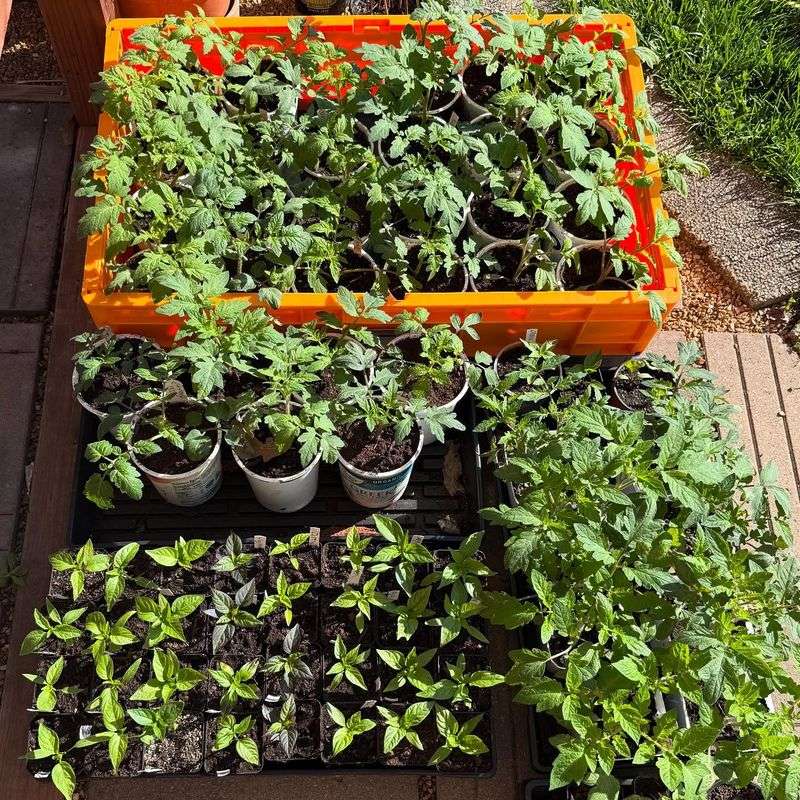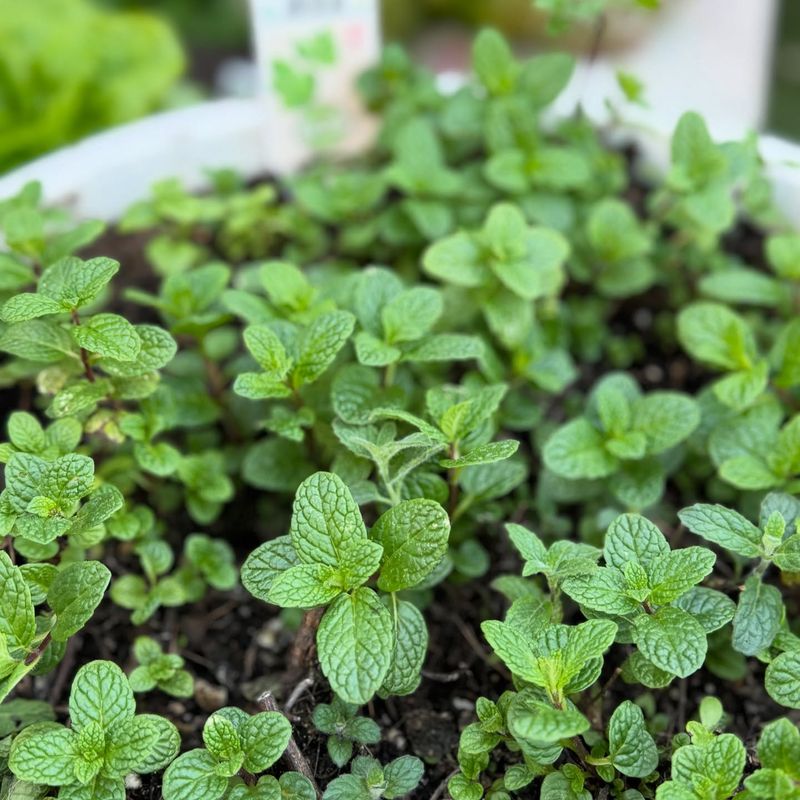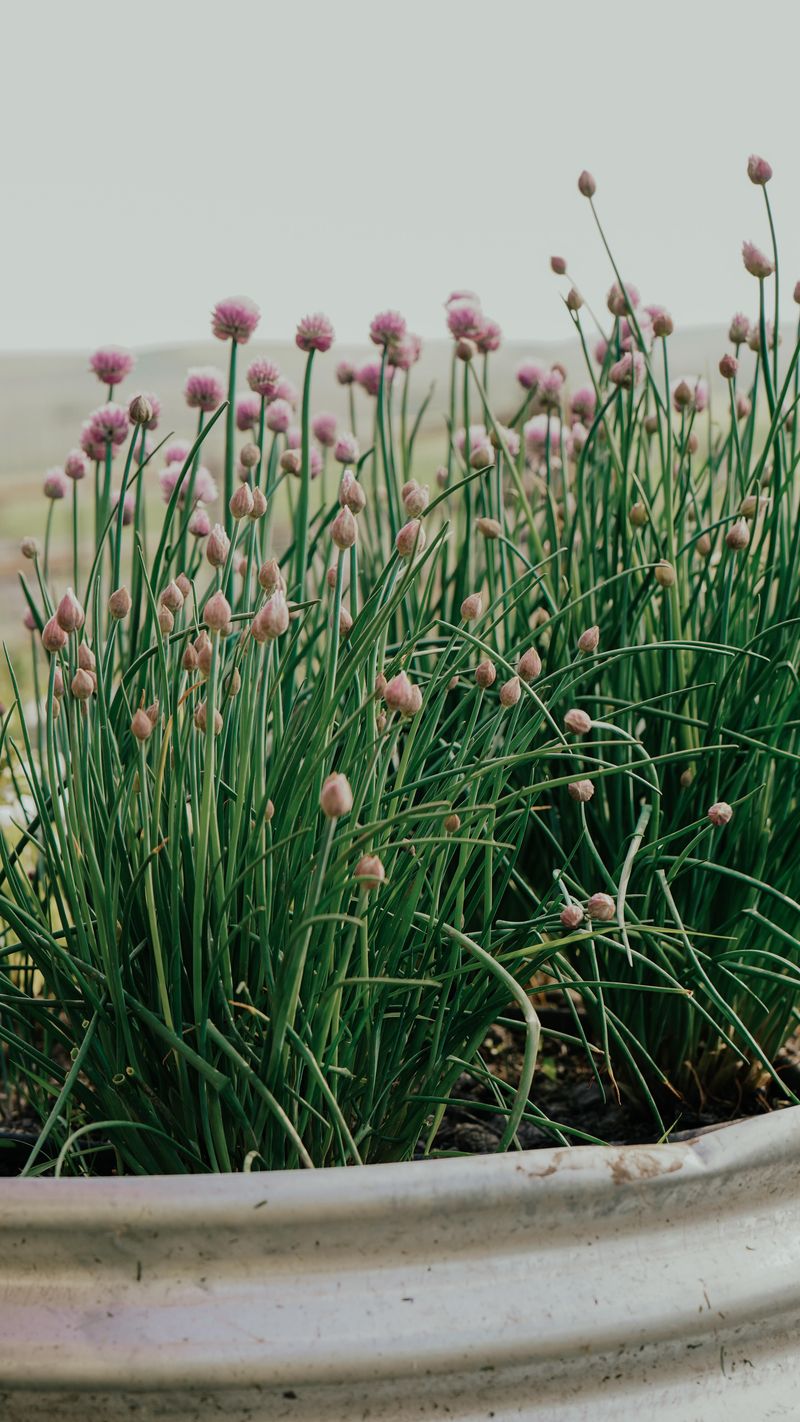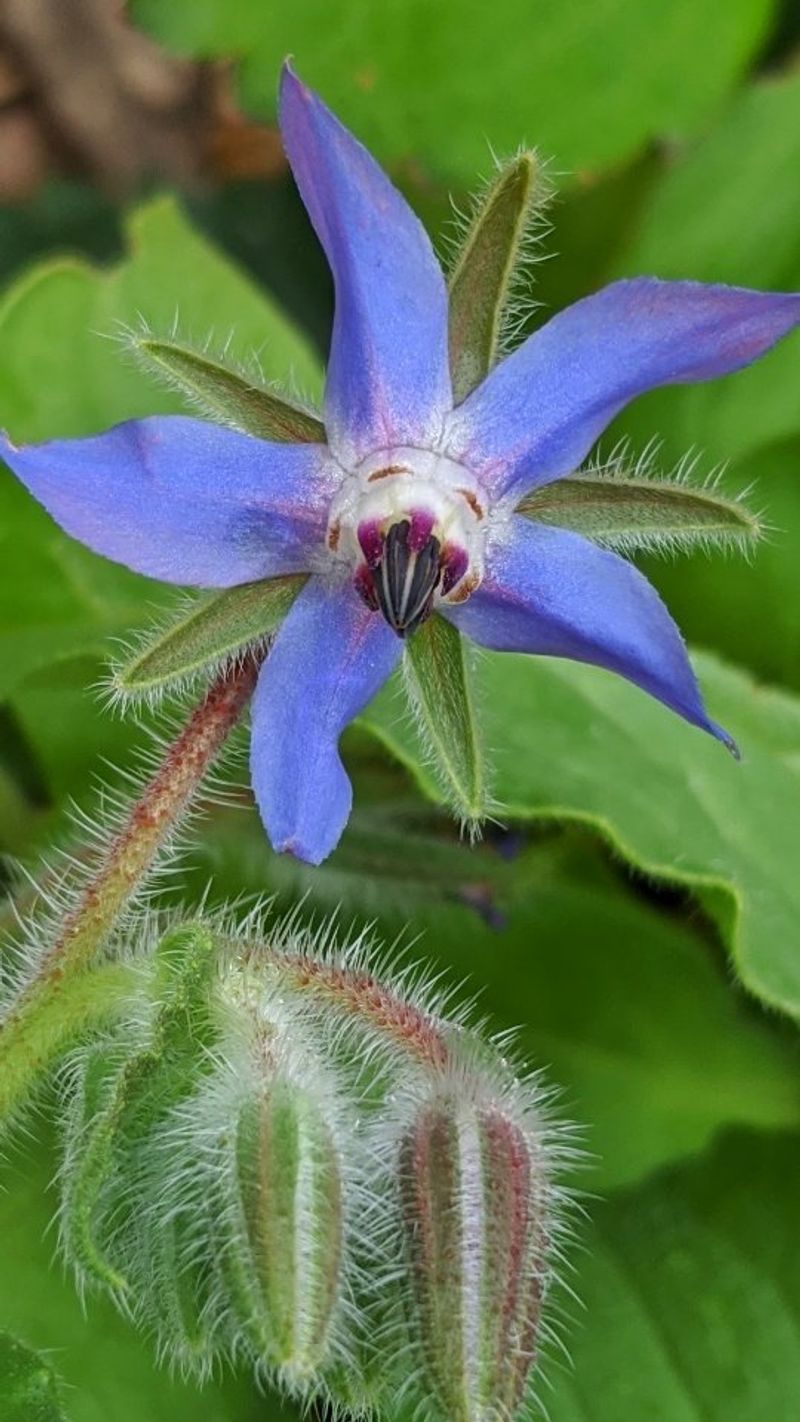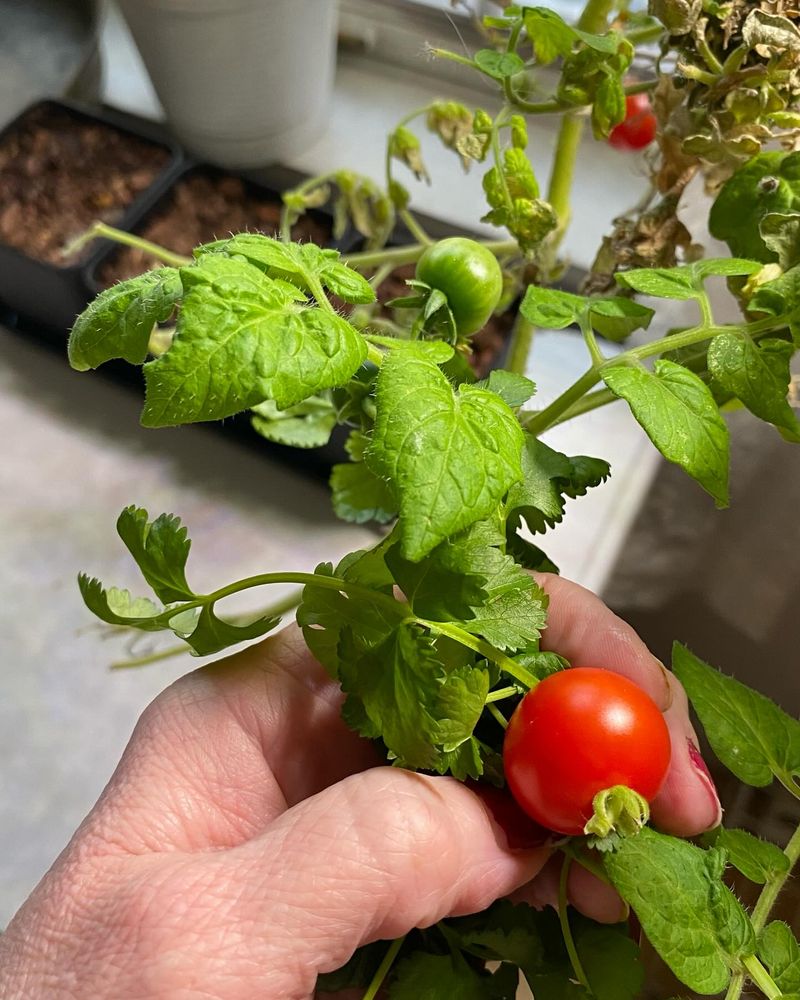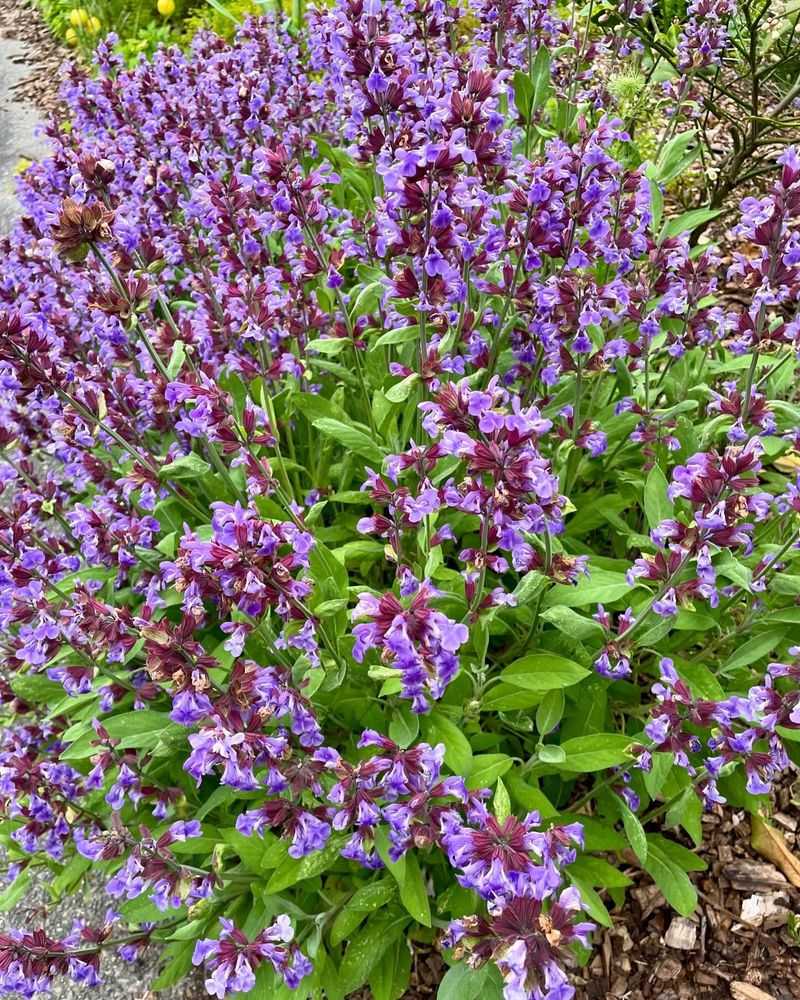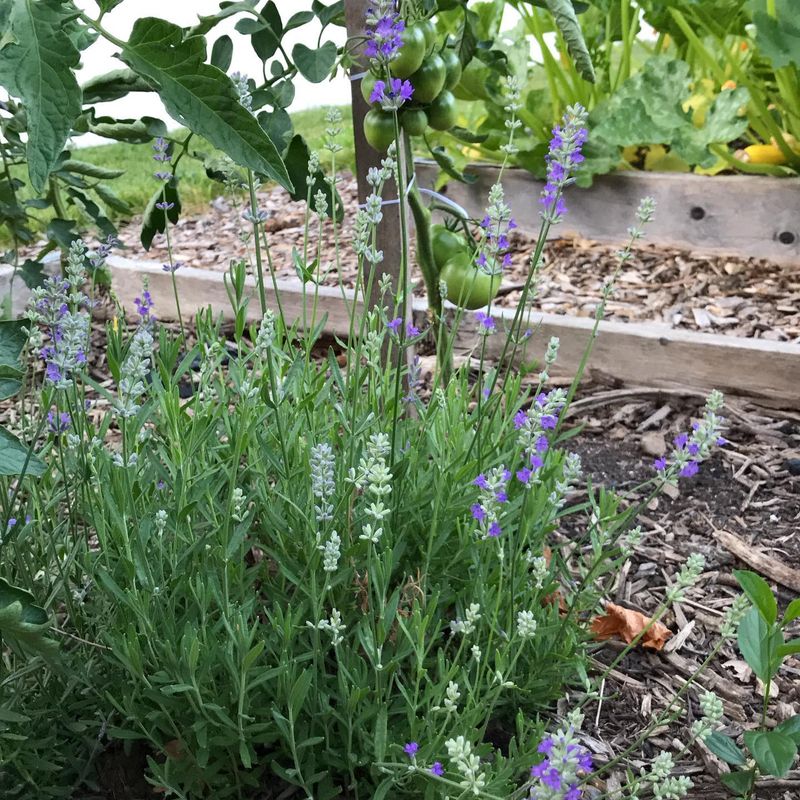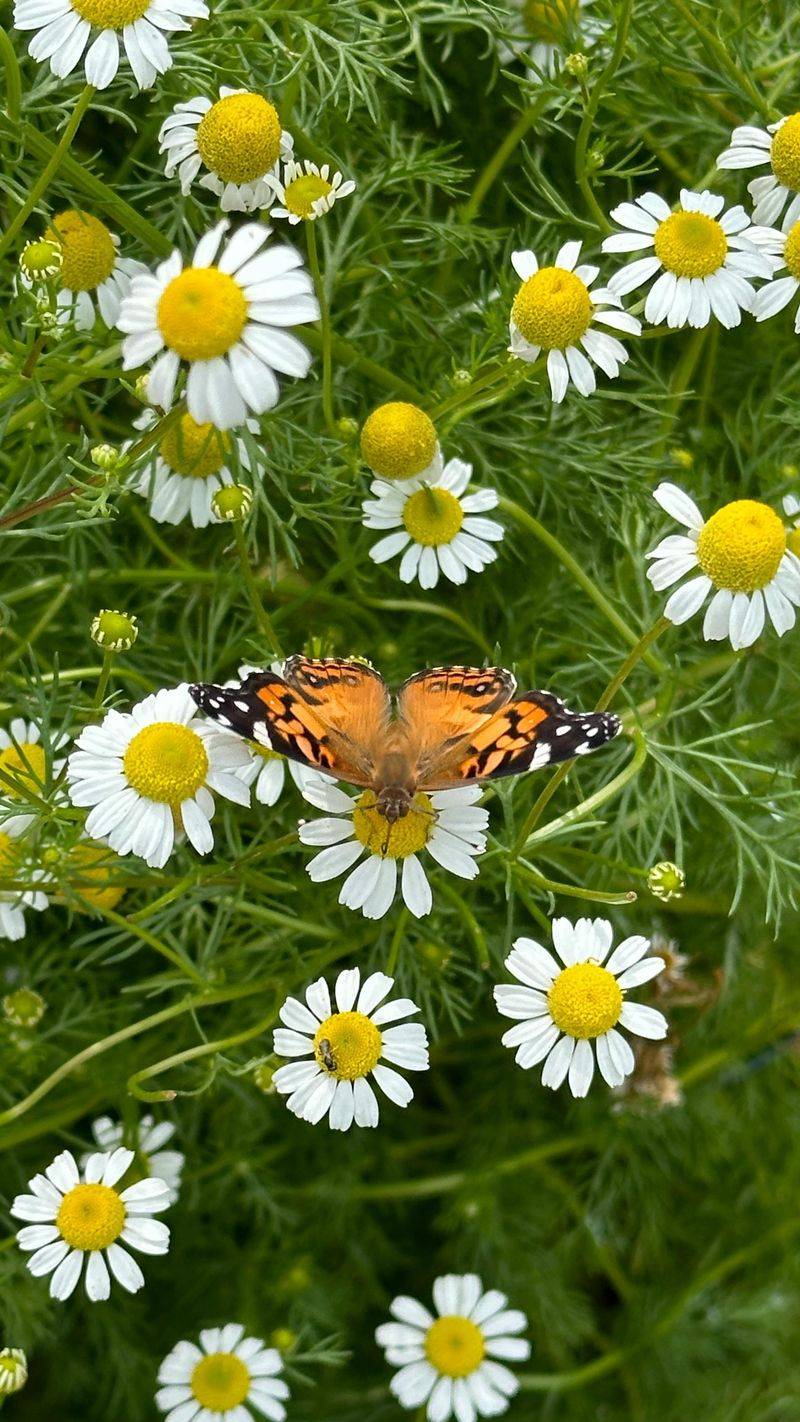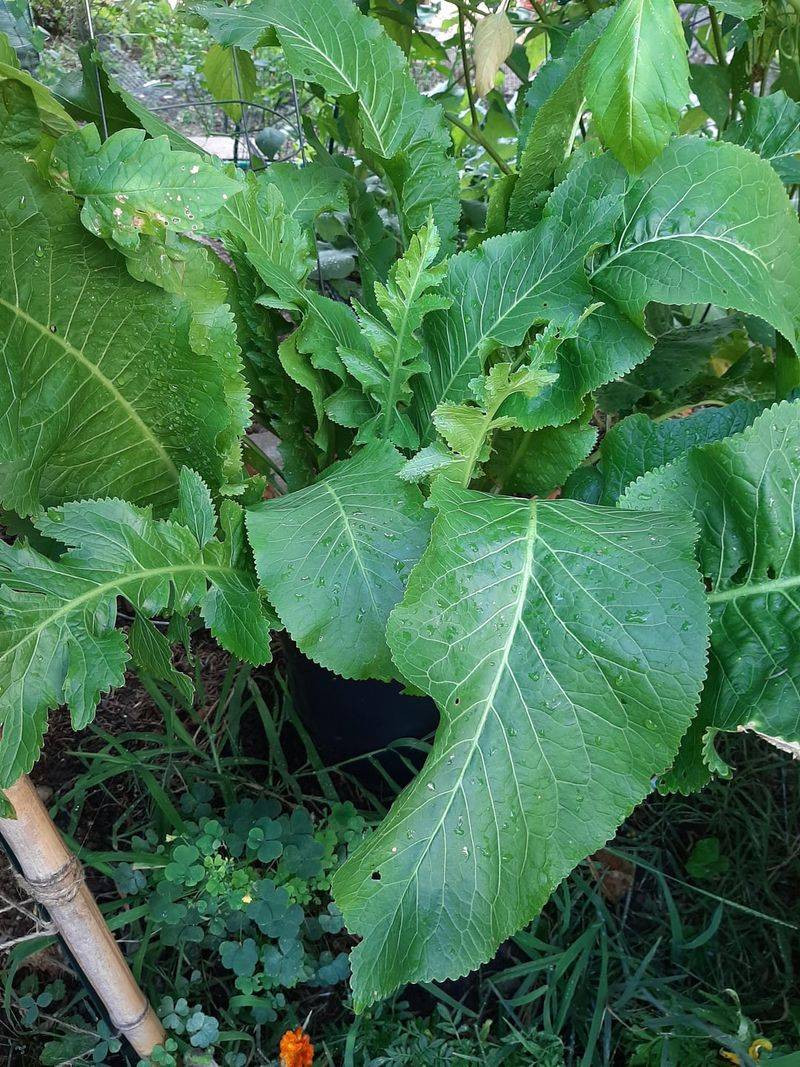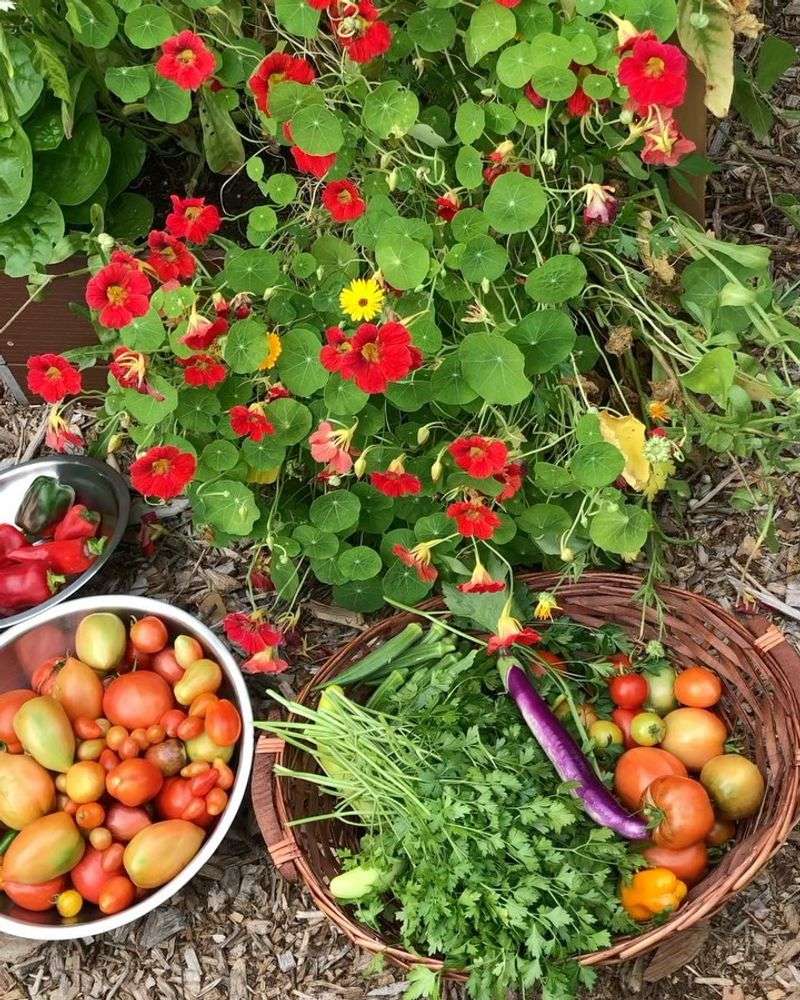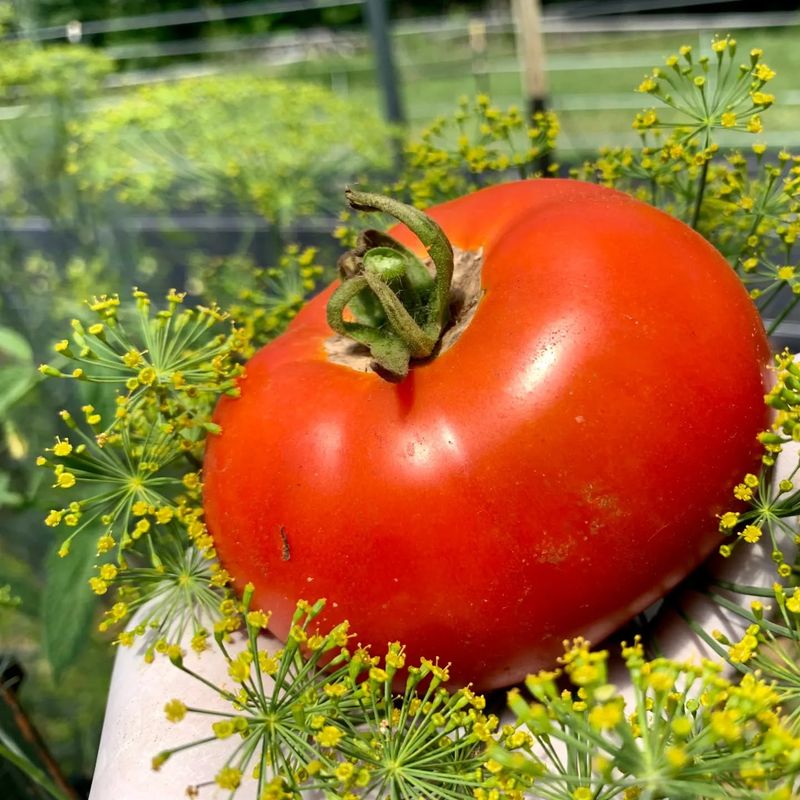If you’ve ever tucked a few basil plants next to your tomatoes and noticed they both seemed happier, you’ve already experienced the magic of companion planting. Herbs and tomatoes go together like summer and sunshine—but only if you know which ones are the right match.
Some herbs are like friendly neighbors—boosting tomato growth, keeping pests at bay, and even making those juicy fruits taste better. Others… well, let’s just say they’re better off in a different corner of the garden.
In this guide, we’ll talk about 17 herbs that are total team players when it comes to growing tomatoes—along with 3 that you might want to keep at a distance. These pairings can make a big difference in your harvest. Grab your trowel, and let’s do some garden matchmaking!
1. Basil
Basil is often deemed the perfect partner for tomatoes, not just in culinary dishes but in the garden as well. Its aromatic leaves help repel common pests like mosquitoes and flies, making it a protective companion.
When planted near tomatoes, basil is said to enhance their flavor, adding a robust depth to the taste. It thrives in similar warm, sunny conditions, requiring about six to eight hours of sunlight daily.
While it may require regular watering, its benefits in pest control and flavor enhancement make basil a must-have in any tomato grower’s garden.
2. Parsley
Parsley’s frilly leaves add a touch of elegance and practicality to a tomato patch. Known for attracting beneficial insects such as hoverflies, parsley assists in controlling pests like aphids.
This herb prefers cooler weather compared to its tomato counterparts, thriving in partial shade. Its ability to grow in less sunny spots makes it a versatile companion.
Regular watering keeps parsley happy, while its role in supporting a healthy garden ecosystem is invaluable. Parsley’s subtle influence helps tomatoes flourish without a hitch, making it a hidden gem in companion planting.
3. Thyme
This one, with its low-growing habit and earthy aroma, forms a protective barrier around tomatoes. It’s particularly effective in deterring harmful insects like whiteflies and tomato hornworms.
This herb enjoys full sun and well-drained soil, aligning perfectly with tomato’s needs, ensuring both plants thrive together.
Thyme’s robust nature means it requires minimal maintenance once established, adding both practical and aromatic value to your garden. Its presence not only wards off pests but also contributes a delightful scent, making garden strolls a sensory pleasure.
4. Mint
A powerful herb known for its vigorous growth and refreshing scent. It’s an excellent companion to tomatoes, as its strong aroma confuses pests, keeping them at bay.
However, mint’s tendency to spread quickly means it’s best kept in a container to prevent it from overwhelming other plants. Despite this, its pest-repelling properties make it a strategic ally.
Providing part shade and moist conditions helps mint thrive, ensuring your tomatoes are free from pesky intruders. Mint’s robust presence is both a deterrent to pests and a fragrant delight.
5. Chives
A gardener’s friend, offering both beauty and utility. Their onion-like aroma deters a variety of pests, including aphids and Japanese beetles, protecting nearby tomatoes.
Chives thrive in full sun but are tolerant of partial shade, making them adaptable companions in the garden. They require minimal care, needing only regular watering to maintain their lushness.
Their delicate purple blossoms attract pollinators, enhancing the garden’s biodiversity. With chives, you gain a versatile ally that supports your tomatoes while adding a splash of color and flavor.
6. Oregano
This one brings more than just culinary delight; its presence in the garden aids tomatoes by repelling harmful insects. Renowned for its strong fragrance, oregano helps keep pests like cabbage moths and beetles at bay.
This hardy herb prefers full sun and well-drained soil, paralleling the conditions favorable for tomatoes. Once established, oregano requires little maintenance, thriving even in dry conditions.
Its aromatic leaves are a boon for any kitchen, while in the garden, it serves as a steadfast companion, protecting and enhancing the growth of your tomatoes.
7. Borage
A visually striking herb with its star-shaped blue flowers, offering more than just beauty to a garden. It acts as a natural deterrent to tomato hornworms and attracts beneficial pollinators like bees.
Borage thrives in full sun and tolerates poor soil conditions, making it a resilient choice alongside tomatoes. Once established, it needs little care beyond occasional watering.
Besides its pest control benefits, borage adds an aesthetic appeal, creating a backdrop against the green foliage of tomato plants. Its presence is both functional and decorative.
8. Marigold
Marigolds are a classic choice for companion planting, known for their blooms and pest-repelling properties. Their scent deters nematodes and other soil-borne pests that can plague tomato plants.
These flowers thrive in sunny conditions, complementing the sun-loving nature of tomatoes. Regular watering ensures their continued bloom and vibrancy throughout the growing season.
Apart from their protective benefits, marigolds add a splash of color, making the garden more inviting. Their dual role as protectors and beautifiers makes them indispensable in any tomato patch.
9. Cilantro
Cilantro offers more than just its distinctive flavor; it serves as a powerful ally in repelling harmful insects from tomato plants. Its aroma confuses pests such as spider mites and aphids, keeping them at bay.
This herb prefers cooler temperatures and can thrive in partial shade, making it a flexible choice in a tomato garden. Regular watering helps maintain its growth and effectiveness.
Cilantro’s presence not only protects tomatoes but also enriches the garden ecosystem, offering both culinary and ecological benefits to your planting strategy.
10. Sage
This is a resilient herb known for its strength in repelling pests like flea beetles and cabbage moths, protecting tomato plants from infestations. Its earthy scent adds another layer of defense against unwanted insects.
Sage thrives in full sun and well-drained soil, making it an ideal companion for tomatoes. It requires minimal water once established, adding to its low-maintenance appeal.
Besides its protective role, sage adds texture and a visual contrast with its silvery foliage, enhancing the garden’s aesthetic. Its robust nature makes it a reliable and attractive addition.
11. Lemon Balm
Lemon balm, a member of the mint family, offers gentle pest protection for tomatoes without being overpowering. Its mild citrus scent helps deter insects like mosquitoes and aphids, while also attracting pollinators.
Like tomatoes, lemon balm enjoys full sun to partial shade and thrives in moist, well-drained soil. However, it can spread quickly—so consider planting it in a container nearby to keep it under control.
Besides its pest-repelling qualities, lemon balm brings a calming fragrance to the garden and can be used fresh in teas and dishes. It’s a quiet but effective ally for your tomato plants.
12. Rosemary
Rosemary is celebrated for its aromatic leaves and pest-repelling qualities, making it an ideal companion for tomatoes. Its strong scent deters insects like whiteflies and mosquitoes, protecting tomatoes from damage. This herb prefers full sun and well-drained soil, thriving alongside tomatoes in similar conditions. Once established, rosemary requires minimal watering, making it a practical choice for low-maintenance gardening.
Beyond its protective benefits, rosemary adds vertical interest with its bushy growth, creating a dynamic and aromatic garden environment. Its resilience and fragrance make it a beloved garden staple.
13. Tarragon
Aflavorful herb that also offers protection to tomato plants by deterring pests like aphids and slugs with its distinctive aroma. Its fragrant leaves create a natural shield against these common garden nuisances.
This herb thrives in full sun and well-drained soil, making it compatible with tomato growing conditions. It requires little maintenance, needing only moderate watering to flourish.
Tarragon’s presence enhances the garden both visually and functionally, contributing to a healthier ecosystem. Its unique aroma and pest-repelling qualities make it a valuable addition to any tomato patch.
14. Lavender
Lavender’s soothing aroma is more than just pleasant; it’s a natural deterrent to pests like moths and flies, protecting nearby tomatoes. Its beautiful purple flowers attract beneficial pollinators, enhancing the garden’s biodiversity.
Lavender thrives in full sun and well-drained soil, mirroring the needs of tomato plants. Once established, it requires minimal watering, offering a low-maintenance option for gardeners.
Beyond its protective benefits, lavender adds a splash of color and fragrance, transforming the garden into a sensory delight. Its dual role as a protector and beautifier makes it a sought-after companion.
15. Chamomile
This one is more than just a soothing tea ingredient; it’s a beneficial companion plant for tomatoes. Known for its ability to improve plant health, chamomile deters pests and attracts beneficial insects like ladybugs.
This herb thrives in cool conditions and prefers partial shade, making it adaptable in the garden. Regular watering ensures its effectiveness and growth.
Chamomile not only supports tomatoes with its protective qualities but also adds visual charm with its delicate white flowers. Its presence creates a balanced and healthy garden ecosystem, enhancing growth and productivity.
16. Horseradish
Horseradish is an assertive herb offering robust pest control for tomatoes. Its pungent roots deter common pests like aphids and whiteflies, keeping tomato plants safe.
This herb thrives in full sun and can tolerate a variety of soil conditions, aligning well with tomato requirements. It requires regular watering to maintain its effectiveness.
Besides its pest-repelling benefits, horseradish adds a bold presence to the garden, contributing both visually and functionally. Its vigorous nature and protective qualities make it a strategic choice for enhancing tomato growth.
17. Nasturtium
These are a delightful addition, with their bright flowers and pest-repelling capabilities. Their peppery scent deters aphids and whiteflies, protecting nearby tomatoes.
These flowers thrive in full sun and require well-drained soil, making them ideal companions for tomatoes. Regular watering keeps them happy and effective throughout the growing season.
In addition to their protective benefits, nasturtiums add a splash of color and attract beneficial pollinators, enhancing the garden’s visual appeal. Their cheerful presence and pest control qualities make them indispensable in any tomato patch.
18. Fennel
Fennel is a controversial companion, often advised against planting with tomatoes due to its allelopathic properties. It releases chemicals that can inhibit tomato growth, leading to reduced vigor and yield.
Despite being beneficial in repelling pests, its presence can overshadow the benefits due to its competitive nature. Fennel prefers full sun and well-drained soil, similar to tomatoes, but its growth habits are less compatible.
To avoid stunted growth, it’s best to plant fennel in a separate area, allowing tomatoes to thrive without competition. Its beautiful foliage and fragrance are better appreciated away from the tomato patch.
19. Dill
While dill can attract beneficial insects, it’s often recommended to keep it separate from tomatoes. Its tendency to attract tomato hornworms can outweigh its benefits, leading to potential infestations.
Dill prefers full sun and well-drained soil, aligning with tomato needs but requires careful placement to avoid adverse effects. To harness its benefits without risk, planting it at a distance from tomatoes is advised.
Its feathery foliage and aromatic presence add character to the garden, but strategic placement ensures tomatoes remain safe from potential pest attraction.
20. Broccoli
Broccoli, though a nutritious vegetable, competes with tomatoes for nutrients and space, potentially stunting growth. Its large leaves and root system can overshadow tomatoes, depriving them of necessary sunlight and resources.
Both plants thrive in full sun and well-drained soil, but proximity can lead to competition rather than cooperation. To ensure optimal growth, it’s best to plant broccoli away from tomatoes, allowing each to flourish independently.
Despite its health benefits, broccoli’s presence near tomatoes can hinder their productivity. Mindful planting helps avoid nutrient competition and supports garden harmony.

